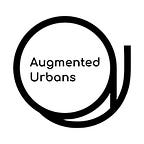Riga region: joining forces to reclaim the waterfront
With summer days heating up the streets and temperatures soaring, Augmented Urbans Riga team took their activities to the river. This time, the “Resilience by the river” expedition brought us to a unique yet somewhat forgotten, somewhat mysterious island on the outskirts of Riga.
Kruminsala is a small island located in the lower reaches of river Daugava, adjacent to the left bank where the city meets its neighbouring municipality — Kekava. It is 0.5 km long and 0.14 km wide, with an average height of 2–2.5 meters above the water level of Daugava. While having existed as a separate island since at least the middle of the 17th century, it is, nevertheless, almost untouched by human activity. The island is undeveloped land mainly covered with wild plants, overgrown trees and shrubs.
We gathered a group of local stakeholders, entrepreneurs, artists, municipality experts, architects, students and others — and together we tested different paths leading from the urban life in the city centre all the way to the mysterious island. Some of us biked, a couple of us rowed in kayaks, some went by floats designed and built by Riga Technical University students.
Participants from the nearby Kekava municipality found their way to the site by foot, some took a public bus or drove their car to the mainland next to the island — a private territory owed by Ltd. Lafivent. The owners are eager to revitalize the riverfront on their side as well and agreed to cooperate and build an anchorage place and dock for public use. Together we organized a cleanup, cut down the bushes and anchored one of the floats to function as a dock.
The other float worked as a ferry bringing people from the mainland to Krumiņsala island for a day full of discoveries. As we explored the wilderness on the island, each participant had a printed map of the site to mark significant areas or sketch their vision. We all took pictures of our discoveries using Google Lens phone app. Google Lens technology is smart enough to identify flower species and helped us map the biodiversity on the island. The ability of Google Lens to recognize plants partly relies on machine learning. With access to a database of images, the app finds the most analogical ones to the object you photograph. Surprisingly enough, we found wildflowers and herbs that are not so easy to find in a typical urban environment! The island of Kruminsala is rich with a diversity of biotopes and virgin nature. Almost like a treasure island for eco-tourism, educational expeditions and wilderness recreation not that far from the city centre.
The aim of our expedition was not only to explore the current situation on the island, its accessibility and biodiversity but also to mark and test a new potential waterway from the port of Agenskalns (city centre) to the island.
Agenskalns port locates on the left bank of river Daugava where a chain of university campuses form what we call the “Knowledge mile”. University campuses are among the key drivers of not only academic but also economic and social innovations in Riga. In Augmented Urbans projects, when thinking about how to ensure a resilient future for our region, are looking at ways to expand the positive influence of “The Knowledge mile” and connect it to places on the outskirts of the city and surrounding municipalities. New waterways can help us bridge not only city centre and the surroundings, but also connect universities and their students, eager to solve the real-life issue,s with municipalities and businesses that have tons of them yet to solve.
“We aim at a resilient, inclusive and fair future for the whole Riga metropolitan region, not just the city centre. To move forwards with this concept, we developed a chain of activities on the banks of the river to connect knowledge-based resources with places, people and businesses through the river. We want to spark new collaborations, share resources and bring new value to the river. We want to encourage people to work towards resiliency themselves, to take ownership of public places and ensure that everyone and every place can thrive,” explains Augmented Urbans project coordinator from Riga Planning Region, Dace Grīnberga.
During our discussions, we all agreed that Kruminsala is truly a unique place and any future activities and human presence on it should happen respectfully without damaging the rich biodiversity and mysterious ambience. Some saw this place as a unique site for locals and visitors to enjoy camping, some as an excellent place for organising expeditions for school children to learn about different plant species. Others thought a small restaurant and arts performances could make the island a new “must visit” place in the Riga region. There were also ideas about exploring the island at night to experience how the urban lights and noises meet the sounds of nature like insects, birds, animals, the water.
Whichever scenario plays out in real life, we have achieved in our goal: to provoke a wave of thought in people. And with building an anchorage point, we have enabled others to go on their expeditions. After all, it is not a dramatic change in our environment that we wish to achieve, but rather a change within people.
Text: Elīna Sergejeva, Riga Planning Region
Photos: Augmented Urbans Riga team
